Chlorine – your pool needs it but what’s the best way to get it into the water? While you can add your sanitizer manually, many pool owners prefer to automate the process and not handle chlorine any more than necessary. If you fall into that camp, you’re in good company and you have options. We’ll start with the very basic and end up at the bells and whistles.
Floating Chlorinators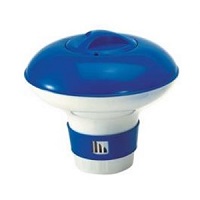
The floating chlorine dispenser is the simplest of all, a plastic vessel that holds about three pounds of 1″ or 3″ chlorine tablets. You load it up with tabs, put the cap back on and chuck it in the pool. Water passes through, slowly dissolving the tablets, while the dispenser continually floats about, dispersing the chlorine.
Floating chlorinators are cheap and easily replaceable however they offer no control over the amount of sanitizer dispensed. If you are looking for quick and easy with no technology, this might be your best option.

Tablet Chlorinators
Next up is the automatic chlorinator or chemical feeder – a plastic canister that holds 1″ or 3″ chlorine tablets with connections to attach it to the pool’s plumbing. It is positioned after the filter (or if there is a heater, then plumbed after that). These chlorinators comes in two flavors, inline and offline.
Inline means it is hard plumbed into the PVC pipe. As water passes through the chlorinator, it dissolves some of the tablets and sends chlorinated water to the pool. This type is installed usually during new pool construction or during a plumbing renovation on an existing pool when cutting PVC is no big deal.
Offline offers a less disruptive installation option for existing pools. Instead of cutting out a chunk of pipe, an offline chlorinator is hooked up by drilling a couple of small holes in the PVC plumbing. Thin tubing is then run from the canister to the holes to create the connection. Some water from the pipe passes through these small tubes into the chlorinator and then along to the pool.
Both inline and offline feeders offer a manual control knob to dial up or down the amount of chlorine being dispensed. Automatic chlorinators are a great choice for pool owners who want some automation and control without having to deal with any electronics.
Salt Chlorinators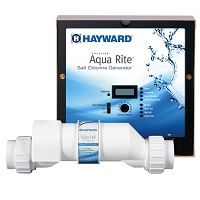
Salt chlorine generators take automation to the next level by actually creating chlorine. This type of system consists of a power supply and a salt cell, along with salt added to the pool water. The cell, plumbed inline with the return pipe, contains coated metal blades which receive a low voltage current. Salt water flows through the cell, causing electrolysis, which splits the salt and water into hydrogen and hypochlorous acid. This acid replaces pre-packaged chlorine sanitizer.
Since salt remains in the water and does not evaporate, only minor salt adjustments are needed in cases of dilution from heavy rains or loss of water due to a high bather load and lots of splashing. The power supply display will indicate any issues with salt and chlorine levels, and also allows “super chlorination” which is the equivalent of shocking the pool.
There are a number of benefits that come with using salt chlorinators. First, they create a gentler form of chlorine which is non-irritating and does not smell like bleach. Second, gone is the hassle of handling and storing chlorine. Third, the milder sanitizer these systems produce is healthier and helps limit exposure to the less desirable components of chlorine. If all of that sounds appealing to you – and you have the budget – a salt chlorinator is a good choice.
Chlorination Through Automation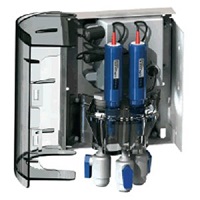
Hayward offers a “sense and dispense” module for two of their pool automation systems, the ProLogic and the AquaRite XL. These modules automate the dispensing of acid to adjust pH and chlorine to maintain the appropriate ORP/chlorine level. The pH can be dispensed either from a liquid acid tank or a CO2 tank. The chlorine is generated through the salt chlorinator that is part of these automation systems. This is the highest tech option, traditionally more common for commercial pools but now also available for you smart home fanatics out there. This will definitely be the most expensive way to go.
If you have questions about the best chlorinator for your particular pool and budget, contact Inyo and we’ll give you our opinions, absolutely free.

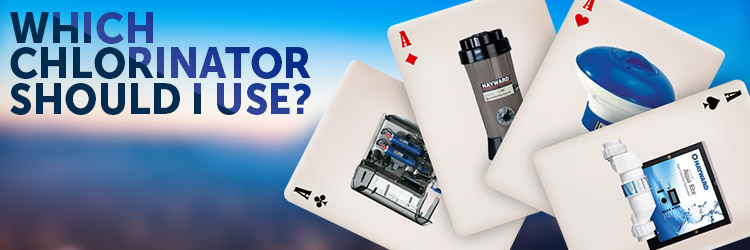
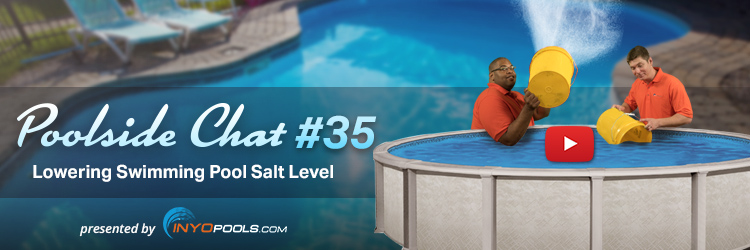
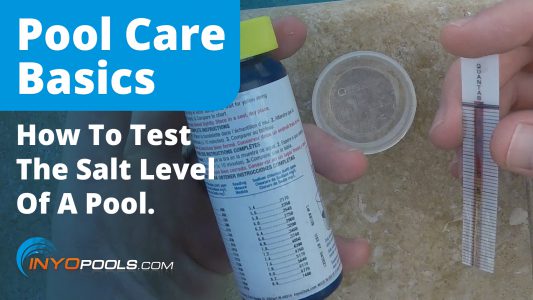
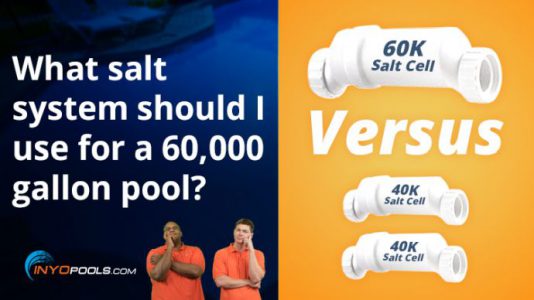
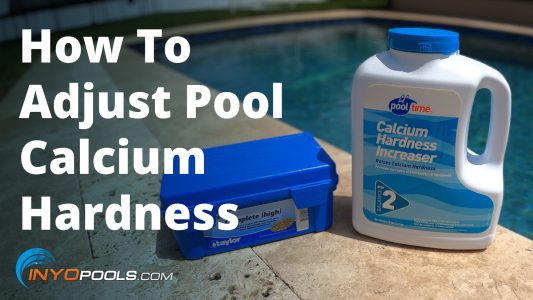






Can anyone recommend a good in line tablet based chlorinator. I have a Hayward for the past 3 years. The ring that sealed the top failed after about 2 years. Now the replacement rings seem to be failing within months.
Does any company make a better dispenser that has a snap lid or something to add the tablets? I
I am not interested in a slat water solution. I had one of those and have my own opinions on them.
Thanks
Mike
I’ve been doing research in this area as well. I think I’ve come to the conclusion of getting a powerclean offline chlorinator with a glass lid. I’ve heard they are well built and larger diameter hoses for better flow. check it out.
Is there a specific in-line chlorinator that you would recommend to be used when pool equipment is located about 2.5 feet below the waterline of the pool?
Matthew – I hope you are still doing this Q&A thing. I have a small (14,000) in ground pool – I’m in FL and it is in a screened lanai. I have gone through 2 off-line Hayward Chlorinaters … first one was here when I got here and pretty much had seen better days. I installed a second one – but used the same clamp saddles and repeatedly replaced the tubes and lines. Following some overly aggressive landscaping I discovered the check valve side of the unit had broken off … (and there is just not enough of the valve to extract it. No one seems to sell the entire end cap … and without making this any longer … I am pretty confident I broke the adjustment valve. So I think I need to declare this DOA. My question. I visited what seemed to be a good pool shop yesterday and they strongly advised AGAINST the inline models because the diameter of the piping through the unit is dramatically reduced from 2+ inches down to about the size of a garden hose. Is that a concern? The pool has a variable speed pump – and after it primes it runs at a pretty low rpm … thoughts?
Do i need a chlorinator? Or is putting a tablet in the skimmer good enough?
Does putting tablets in the basket weaken the plastic?
1) Yes.
2) Review answer to number 3.
3) Yes, weakens the plastic of the skimmer and can damage the internal plastic pieces of the pump and filter.
Need a little advice. Building a pool. Trying to make some decisions. The sales guy says salt, although I am hearing from other pool sales guys that supreme plus with chlorine is better. At this point I am frustrated and confused. I feel like all these people’s goals are to sell me something and might not have my best interest at heart. I am looking at longevity, maintenance costs, and initial price point. Any help you can provide would be much appreciated. Thanks,
Jacqueline, I’m in Napa Ca & we just converted from chlorine to salt with backup inline tablet feeder & use the BBB method. We have a 30,000 gal gunnite square pool with a dark bottom.
We love the feel & can swim & float for hours & skin feels great. Hair not so much but way better than other kind of chlorine.
It’s more $ up front for sure but for sure less $ overall. More time to maintain until you get the hang of it. The BBB method is less expensive for adjusting & shocking. (Baking soda borax & bleach), on top of salt as well as stabilizer. The inline tablet feeder helps to supplement when there’s heavy use. To supershock I use bleach va salt cell’s supershock setting-saves the life of the salt cell &=cheaper $/per shock. After initial salt, we only added 1 bag this summer ($5.50.walmart online-pickup for morton pool salt)
We’ll stay with thus until it goes out. I’m not sure if metal pool parts damage will be worth it but hopefully we can keep the pool well balanced * damage mitigated.
BUT, we weren’t warned of how much acid we’d be adding weekly (1/3-1/2 gal). For PH bounce.
Also, moreso than chlorine have to treat our pool deck, toys & suits like we do at the ocean due to the salt. We spray / & rinse with a dunk tank of fresh water. Desintigrated nylon ropes & mesh on inflatables before I realized the need to rinse (1 month if use).
WATCH NEARBY PLANTS. Saltwater can kill them
PETS shouldn’t drink it could kill them!!
I use DE filter & used to lower chlorine & backwash to corner of yard & bushes were ok but can’t now with saltwater.
We’ve got a few seasons to decide but so far SALT STILL WINS!
I use a hayward and the lid is very hard to screw off. Any suggestions?
A strap wrench usually does the trick.
I like the tip about lubing o-rings! I would have to say that this is one of the most oveoerokld areas of pool maintenance. I show up to solve filter problems and there’s always an o-ring torn or missing altogether, almost always anyway.Homeowners! Lube any o-ring you see when doing regular maintenance, and you will save some extra cash instead of paying your local pool service company.
What if your pool could self adjust, automatically test its own chemistry, and balance and sanitize your water? What if it always knew what the water needed and adjusted continuously?
Well, you are in luck because manufacturers like Stenner and Hayward do make all-in-one sanitation systems that control chlorine, acid and monitor pH. For standard chlorine pools, I suggest you research Stenner’s C20002TCA 2 Tank System that includes 30 gallon tank with feed pump (for liquid chlorine), 15 gallon tank with feed pump (for liquid acid), and a Polaris C2000 Chlorine and pH controller. Stenner Pumps are an easy add-on to existing pool systems because feeder lines can be saddled onto your current PVC plumbing.
For those of you in need of a saltwater generator that does all the work, take a look at Hayward’s AquaRite Pro Sense & Dispense System. The AquaRite Pro Sense & Dispense includes: AquaRite Pro Power Supply, AquaRite Pro Salt Cell, Chemistry Kit 1 pH & ORP Sense with ORP Dispense, and Chemistry Kit 2 CO2 pH Dispenser. The AquaRite Sense & Dispense gives you the dual advantage of silky smooth water of the salt system and the no fuss self-balancing chemistry wizardry of the Sense & Dispense
The most common floaters will have a series of slits that can be open or closed to determine the volume of water entering and exiting the floating vessel.
We operate our commercial pools 15 hours per day. The Pentair SCG units have a life cycle of 10,000 hours or in this case about 18 months. The replacement cost is high considering we have to import them into Mexico (add about 20%).
Is there a better choice out there?
Thanks,
Bob
Bob very good question. I had to do some digging to find a suitable answer for you; and that answer is the NEX-GEN Chlorine Generator by ChlorKing. The NEX-GEN is a unique design that uses a one power unit one cell design instead of the cell and power center stacking Pentair and Autopilot units. Those manufacturer’s commercial systems are essentially residential salt cells daisy-chained to reach the 100K, 150K and 200K gallon plateaus. The NEX-GEN is a all in one manifold that requires only piping for incoming and outgoing water to the pool. That design feature makes it a plug and play installation. On the otherhand, the daisy-chain design leads to more complicated piping with more individual parts that are likely to fail.
The NEX-Gen can produce 5 – 80 pounds of chlorine a day with minimal maintenance. A chlorine producing powerhouse like the NEX-GEN is more than enough for most pool applications. And I know you were concerned about durability and long term use, so here is some warranty information for you to look over:
ChlorKing® system carries a limited 3 year warranty
3-Year warranty on assembly of electrical components and cell housing.
– 1-Year on all electrical items.
– 2-Years or 15,000 hours, which ever occurs first, pro-rated hourly, on titanium electrodes.
We currently do not have it listed on our website but check back soon as we are working on it as I type this.
I had an off-line chlorinator but because my pump/filter set-up is below water level (outside but slightly downhill of the pool) it never worked properly. Apparently it was supposed to work by adjusting the water level in the column with chlorine tablets and it was always too high hence too much chlorine.
I am considering an in-line chlorinator and am wondering if it works the same way (dependent upon adjusting water level in the chlorine chamber) or if it is supposed to fill the chlorine chamber and just meter out the proper amount of solution? If the latter I should be able to use it below water level of I install valves on each side, right?
Nick thank you for the reply. Yes the inline would suffer from high chlorination just as your offline. The issue is likely stemming from your chlorinator being downhill from the pool and dissolving the chlorine pucks at a super fast rate. I would suggest check valves on either side of the chlorinator to control the flow of water.